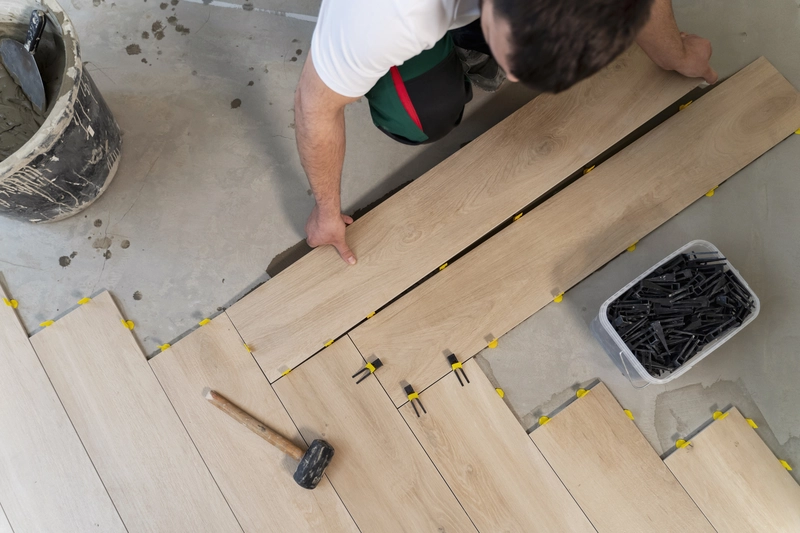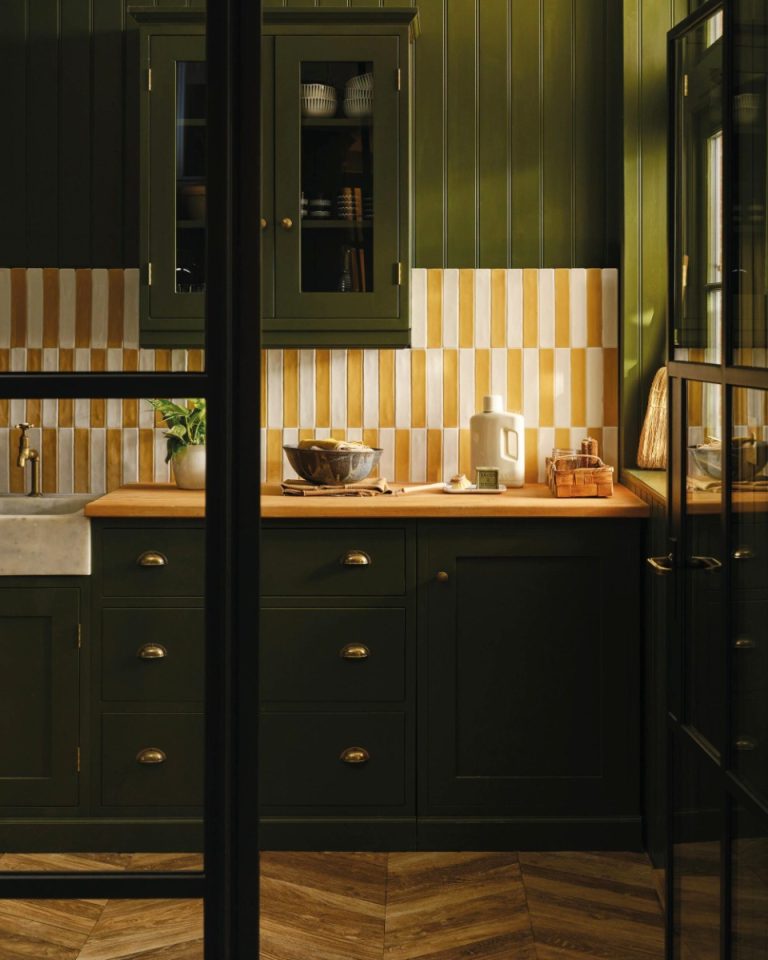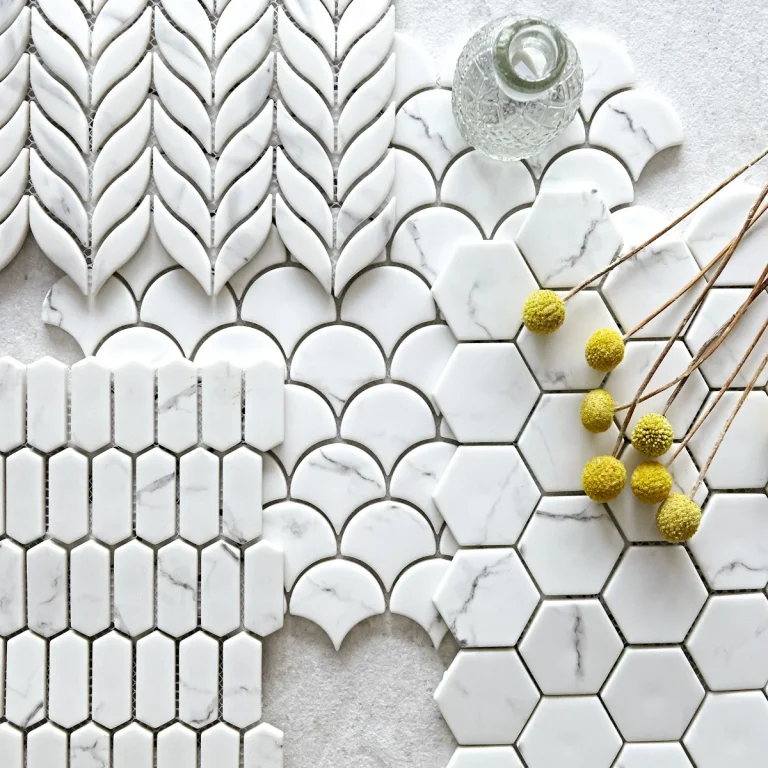Installing vinyl flooring has the potential to significantly enhance a space; however, when laying it over a concrete floor, the selection of the appropriate underlay is essential, as it serves as a crucial moisture barrier and provides sound insulation.
This article examines the importance of underlay for vinyl flooring on concrete, elucidating its role in improving comfort, insulation, and durability. It addresses whether underlay is necessary, the potential consequences of omitting it, and the most suitable types to consider.
Furthermore, it provides comprehensive, step-by-step guidance on preparing concrete surfaces and installing underlay to achieve optimal results, ensuring a durable installation and seamless transition. Engaging with this information will facilitate the success of your vinyl flooring project.
What Is an Underlay for Vinyl Flooring Concrete?
An underlay for vinyl flooring serves as a critical layer between the vinyl and the subfloor, which in most cases is concrete. This layer not only enhances the comfort experience by providing cushioning but also plays a vital role in sound reduction and thermal insulation and making it an essential component for a durable flooring installation.
Various underlay options exist, each catering to different needs and preferences, providing benefits such as moisture control, noise reduction, and a seamless transition from one area to another, ideal for areas like the kitchen and bathroom.
What Underlay Is Required For Installing Vinyl on concrete?
Using an underlay is crucial when installing vinyl flooring on a concrete floor, as it provides essential moisture barrier properties that prevent water damage, ultimately prolonging the lifespan of the flooring system, which can include luxury vinyl tiles for an enhanced aesthetic.
Additionally, it offers sound insulation, minimising impact noise, and sound transmission between floors, which enhances the overall comfort of living spaces.
Does Vinyl Flooring Need Underlay on Concrete?
Yes, vinyl flooring typically requires an underlay when being installed over concrete, as the concrete surface can retain moisture which may lead to health issues such as respiratory issues and damage to the flooring if not properly managed, impacting both health and overall insulation class.
In fact, using an underlay is crucial not only for improving the aesthetic appeal of the flooring but also for enhancing its durability. By acting as a barrier against moisture, the underlay significantly reduces the risk of mould and mildew formation, which can contribute to serious health hazards. It provides cushioning, which helps prevent wear and tear over time, ensuring the longevity of the flooring itself.
- Moisture Control: Protects from water damage and prolongs life.
- Health Risks: Mitigates exposure to allergens and respiratory irritants.
- Enhanced Comfort: Adds a layer of cushioning underfoot.
Neglecting to install an underlay can lead to a range of problems, including structural damage and health risks, making it an essential step in the flooring installation process.
What Happens if You Don’t Use an Underlay for Vinyl Flooring on Concrete?
Neglecting to use an underlay when installing vinyl flooring on concrete can lead to a multitude of issues, including moisture build-up that can result in health issues such as respiratory problems and damage to the flooring itself, compromising its durability.
The absence of an appropriate layer can exacerbate sound transmission, creating a noisy environment that may disturb daily life.
Ignoring these critical factors not only diminishes the aesthetic appeal of the flooring but also significantly reduces its overall performance and longevity. Homeowners may experience:
- Increased humidity: Moisture can seep through the concrete, leading to a damp atmosphere.
- Flooring damage: Warping and bubbling may occur when excess moisture is absorbed.
- Health risks: Prolonged exposure to mould and mildew can lead to chronic respiratory conditions.
Prioritising the installation of an underlay is essential for maintaining a healthy living space and ensuring the flooring remains in optimal condition.
How to Prepare Concrete for Installing Vinyl Flooring
Preparing concrete for installing vinyl flooring involves several crucial steps to ensure a smooth and durable installation, starting with cleaning the concrete surface to eliminate dirt and debris that could compromise adhesion.
Following this, any cracks or holes must be filled to create an even surface, which is vital for the longevity of the flooring system, and levelling the concrete surface can prevent future issues with moisture and sound transmission.
a. Clean the Concrete Surface
Cleaning the concrete surface is the first and most vital step in preparing for vinyl flooring installation, ensuring that any dirt, dust, or debris is removed to create a clean and stable foundation for the underlay.
This foundational task not only contributes to the longevity of the flooring but also ensures that any adhesive used will bond effectively.
Start by sweeping the area thoroughly to eliminate loose debris, followed by a vacuum cleaner to capture finer particles. If any stains or sticky residues are present, a mixture of warm water and a mild washing-up liquid can be applied.
- For tougher stains, a diluted vinegar solution can work wonders; however, be sure to rinse the area afterward to avoid any potential residue.
- Consider using a mop or cloth for even distribution of cleaning agents across the surface.
- Allow plenty of drying time before proceeding, as even minor moisture can interfere with the adhesive properties of the vinyl flooring.
Being diligent in this cleaning process not only promotes a perfect installation but also ensures the lasting performance of the vinyl flooring.
b. Fill in Any Cracks or Holes
Filling in any cracks or holes in the concrete surface is essential to provide a smooth and even base for vinyl flooring, preventing any future damage or imperfections from affecting the final installation, and ensuring a professional result similar to that recommended by a flooring expert.
To achieve the best results, it is crucial to utilise high-quality materials such as epoxy fillers or self-levelling compounds, which not only effectively seal the gaps but also bond well with the concrete.
Using the right technique while applying these materials can lead to a substantially more durable and flawless finish. Proper preparation is key, where the surface should be thoroughly cleaned and free from debris prior to application.
Follow these steps to ensure optimal performance of the final flooring:
- Assess the size and depth of the cracks or holes.
- Choose an appropriate filler based on the severity.
- Apply the filler in a manner that smooths it out, ensuring it is level with the surrounding surface.
- Allow adequate drying time to avoid any potential displacement of the vinyl flooring.
By attending to these details, one can greatly enhance the longevity and aesthetic appeal of the entire installation.
c. Level the Concrete Surface
Levelling the concrete surface is a critical final step in preparation for vinyl flooring, as an uneven surface can lead to complications during installation and affect the flooring’s longevity and performance.
To achieve a perfectly flat surface, various levelling techniques, products, and tools are employed. These methods include the use of:
- Self-levelling compounds – These are ideal for creating a smooth, even subfloor.
- Flooring patching compounds – Perfect for filling small dips and holes that can disrupt the surface.
- Concrete grinders and scarifiers – Utilise these tools to remove high spots and create a level surface.
Incorporating these levelling strategies not only simplifies the installation process but directly contributes to the overall quality of the vinyl flooring. A meticulous levelling process ensures that the vinyl adheres properly, reducing the risk of future complications, such as buckling or peeling.
Ultimately, maintaining a flat surface is essential for achieving the desired aesthetic and performance of the installed flooring.
Type of Underlay that Best for Vinyl Flooring on Concrete
Choosing the right type of underlay for vinyl flooring on concrete is essential, as it can significantly impact the overall performance, comfort, and durability of the flooring system.
Various underlay options are available, including foam underlay, rubber underlay, cork underlay, and plywood underlay, each offering unique benefits such as improved sound insulation, moisture control, and cushioning effects.
1. Foam Underlay
Foam underlay is a popular choice for vinyl flooring installation, known for its excellent sound insulation and thermal insulation properties, making it a comfortable and effective solution for concrete floors. Foam underlay, combined with rubber underlay, cork underlay, or vinyl-backed underlay, offers a versatile range of underlayment options for different needs.
This versatile material enhances the overall experience within a space, providing not only a softer walking surface but also increased energy efficiency. When considering installation, it is essential to prepare the subfloor properly and ensure that the foam underlay is laid out evenly to maximise its benefits.
Here are some advantages highlighted for vinyl and laminate flooring:
- Soundproofing: It significantly reduces noise transfer between floors.
- Thermal Insulation: Retaining warmth in colder climates helps in lowering energy costs.
- Comfort: Creates a cushioned feel underfoot, improving ergonomics for everyday use.
Therefore, incorporating foam underlay in vinyl flooring not only elevates comfort but also contributes to a quieter and more energy-efficient living environment.
2. Cork Underlay
Cork underlay provides a unique combination of a moisture barrier and a cushioning effect, enhancing the comfort experience of vinyl flooring while also protecting against potential issues related to moisture retention in concrete.
This versatile material not only boosts the durability of flooring but also significantly contributes to a more pleasant living environment. Plus its protective properties, cork is known for its eco-friendliness, derived from sustainable harvesting practices that ensure minimal impact on the environment. Its exceptional sound absorption qualities help reduce noise pollution, making it an ideal choice for multi-storey living spaces.
- The natural cellular structure of cork acts as an effective insulator, providing warmth underfoot.
- By improving indoor acoustics, it creates a tranquil atmosphere, perfect for relaxation or focused activities.
- Cork’s resilience also means it can withstand everyday wear and tear, maintaining its comforting properties for years.
Choosing cork underlay ultimately supports a greener lifestyle while enhancing both comfort and functionality in any room.
3. Rubber Underlay
Rubber underlay is known for its durability and strong sound insulation properties, making it an excellent choice for vinyl, laminate, and hardwood flooring installations in high-traffic areas or spaces where noise reduction is a priority.
This remarkable material serves not only to absorb impact noise, but also to enhance the overall comfort underfoot. When considering an upgrade or renovation, it is crucial to choose an underlay that complements the flooring’s performance characteristics.
- It increases thermal insulation, ensuring warmer floors during colder months.
- It can help prolong the life of the vinyl by providing a cushioning effect that reduces wear and tear.
- Rubber underlay is resistant to moisture, making it suitable for applications in kitchens, bathrooms, and basements.
Incorporating this underlay into a vinyl flooring project can significantly elevate its functionality while meeting the specific demands of any space.
Do You Need Underlay for Vinyl Flooring on Concrete?
Can you lay vinyl flooring over concrete? While it is technically possible to lay vinyl flooring directly on concrete, doing so poses significant risks, particularly concerning moisture retention and potential damage to the flooring system over time.
Without a proper moisture barrier provided by an underlay, the durability and longevity of the vinyl can be compromised, leading to expensive repairs.
The Risks of Laying Vinyl Flooring Directly on Concrete
Installing vinyl flooring directly on concrete without an underlay introduces multiple risks, including moisture-related issues that can lead to mould growth and health issues such as respiratory problems.
The absence of an underlay can compromise the integrity of the flooring itself, as fluctuations in moisture levels can cause the vinyl to warp or peel over time.
It is essential to recognise that moisture control is paramount; without appropriate barriers, water can seep through the concrete, exacerbating potential complications. Here are a few critical considerations:
- Moisture-related issues: Excess water exposure can create a breeding ground for mould.
- Damage to flooring: Constant contact with moisture may lead to costly repairs or premature replacement.
- Health implications: Prolonged exposure to mould spores can trigger allergies and other respiratory problems.
Ultimately, investing in an underlay not only enhances durability but also ensures a healthier living environment.
How to Install Underlay for Vinyl Flooring on Concrete
Installing underlay for vinyl flooring on concrete requires careful attention to detail, starting with measuring and cutting the underlay to fit the specific dimensions of the room.
Proper installation ensures effective moisture control and sound insulation, which are crucial for the longevity and comfort of the flooring system.
1. Measure and Cut the Underlay
The first step in installing underlay for vinyl flooring is to accurately measure the space and cut the underlay accordingly, ensuring a perfect fit that covers the entire concrete surface. This fundamental process lays the groundwork for the subsequent installation phases, as an imprecise cut can lead to uneven surfaces and, ultimately, impact moisture control.
To achieve precision during this measuring and cutting process, follow these guidelines:
- Tools Needed: A reliable tape measure, a straight edge, a utility knife, and a square are essential for any DIY enthusiast.
- Measuring: Begin by measuring the length and width of the room, taking care to note any nooks or corners where underlay might need to be adjusted. Write down each measurement to avoid errors.
- Cutting: Using the straight edge as a guide, carefully score the underlay material with a utility knife along the marked lines. For thicker materials, make multiple passes to achieve a clean cut.
- Tip: Double-check your measurements before cutting. It’s much easier to adjust the underlay before making irreversible cuts than to rectify, later on, an inaccurate measurement.
Ultimately, maintaining accuracy throughout this stage is vital for optimal outcomes and effective moisture control in the finished flooring.
2. Lay the Underlay on the Concrete Surface
Once the underlay is cut to size, the next step is to lay it flat on the concrete surface, ensuring there are no wrinkles or gaps that could affect the installation of the vinyl flooring.
To achieve a flawless installation, begin by cleaning the concrete surface thoroughly; remove any debris, dust, or previous adhesive, as these could compromise the underlay’s performance. Next, position the underlay in such a way that it covers the entire area evenly, utilising recommended adhesive if necessary to secure it in place. It’s important to leave a small gap around the edges to accommodate expansion and contraction, typically about 6 mm.
- Start from one corner and work your way across the floor, smoothing out any uneven spots as you go.
- Consider using a roller to apply even pressure and eliminate any air pockets.
- Make sure seams between underlay pieces are tightly butted together, as gaps can lead to flooring issues.
Following these best practices will result in a stable base, ensuring a long-lasting vinyl flooring installation.
3. Secure the Underlay in Place
Securing the underlay in place is a vital step in the installation process, as it prevents movement and ensures that the subsequent layers of vinyl flooring function effectively, leading to both longevity and stability within the flooring system.
Neglecting this crucial stage can result in a variety of problems, including unsightly wrinkles or squeaks, which can detract from the overall aesthetic and usability of the flooring.
There are several methods for achieving a secure underlay:
- Adhesives: Using the right type of adhesive can create a strong bond between the underlay and the subfloor. This method is particularly effective in damp areas, as it can prevent moisture issues.
- Fastening Techniques: Options such as staples or nails can also be employed to hold the underlay firmly in place. While these methods may require additional labour, they can provide a very secure attachment, minimising the risk of shifting.
Ultimately, ensuring the underlay is correctly secured not only enhances the performance of the vinyl flooring but also contributes significantly to the overall comfort and durability of the space.
The Benefits of Using Underlay for Vinyl Flooring on Concrete
Using an underlay for vinyl flooring on concrete offers numerous benefits, including effective moisture control, enhanced sound insulation, and improved comfort experience, which collectively contribute to a more durable and enjoyable flooring system.
At TEKA Flooring, we understand the importance of quality materials in your flooring projects. Our extensive range of underlay options is designed to complement our premium vinyl flooring, ensuring you achieve the best results. Whether you’re renovating your home or undertaking a new build, our expert team is here to help you select the perfect underlay that meets your needs.
Transform your space with TEKA Flooring and experience the difference that quality underlay can make for your vinyl flooring on concrete. Contact us today to learn more about our products and services!
Read also:

































